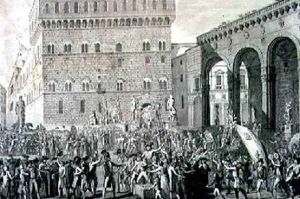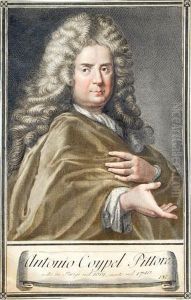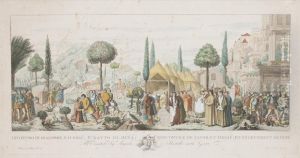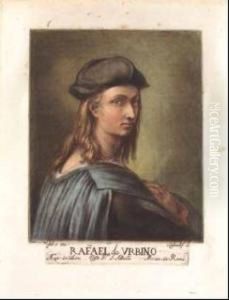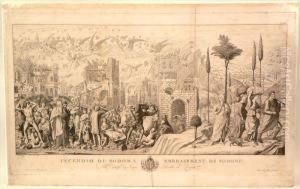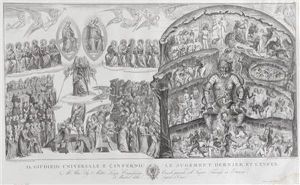Lasinio, Carlo Paintings
Carlo Lasinio, born on November 11, 1759, in Treviso, Italy, was an Italian engraver and painter, known for his refined technique and contribution to the preservation of cultural heritage through his artworks. His full name was Giovanni Carlo Lasinio, but he is commonly referred to as Carlo Lasinio. He began his artistic journey following in the footsteps of his father, who was also an engraver. Lasinio initially trained in Venice before moving to Florence, where he further developed his skills and began to garner attention for his work.
Lasinio is particularly remembered for his efforts in preserving the artistic legacy of the Camposanto Monumentale in Pisa. The Camposanto, a historic cemetery, contained a series of frescoes that were deteriorating due to exposure to the elements. Lasinio painstakingly created a series of engravings that accurately recorded the details of these frescoes, thereby ensuring that the essence of these artworks would not be lost to future generations. His work was pivotal in the early stages of art conservation and serves as an important record of medieval Italian art.
In addition to his work at the Camposanto, Lasinio produced numerous other engravings and prints. He had a particular interest in portraiture and the human figure, which is evident in his series of prints portraying famous people of his time. His style is characterized by careful attention to detail and a dedication to realism, which made his prints highly sought after.
Lasinio also served as a professor at the Academy of Fine Arts in Florence, where he influenced a generation of young artists. His teaching and mentorship helped to disseminate his engraving techniques and artistic philosophies.
Carlo Lasinio passed away on July 7, 1838, in Pisa. His legacy lives on through his engravings, which continue to be studied and admired for their historical significance and technical mastery. Lasinio's contributions to the field of art, especially in the context of preservation and documentation, have earned him a notable place in the annals of art history.
